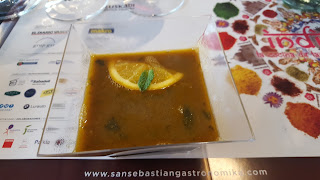Spanish school is a bit of a roller coaster emotionally. There are good days, bad days, boring days, frustrating days, etc. Historically we are quite good students, but learning Spanish is not like learning math or history. It is probably one of the hardest tasks we've undertaken (certainly in a long time). And as Type A perfectionists, we have high expectations for ourselves.
As native English speakers it is very tough to not think like an English speaker when learning and speaking Spanish, even when you know the same rules do not apply. While there are many similarities between the two languages, the differences and nuances definitely overshadow them.
A few examples:
The use of the past tense in Spanish is highly complicated. Several different past tenses can be used at the same time in the same sentence. For example, if I want to say “last Saturday it was a beautiful day and I went to the beach” in Spanish, I need to use two different past tenses: one when describing the day and a different one when describing what I did. As a result, Spanish seems much more precise than English when telling a story.
Prepositions, those little words that we barely notice, are not used in the same way in Spanish as they are in English. In English we say “in the morning,” but the Spanish preposition for “in” (en) is not used in this case. Rather, “de” (of) or “por” (through/for) are used. It is very hard to break our “in the morning” habit!
We are slowly realizing that learning Spanish (or any language) is truly a process and that it takes time and patience. We have the time, but our patience sometimes gets stretched a bit thin on a day-to-day basis.
Fortunately, we have fabulous teachers who know what we’re going through. They even have a name for it: the B1 Depression (Europe uses a six-level system for learning languages (A1, A2, B1, B2, C1 and C2), so we are in the third of six possible levels). It is very common for students like us at the B1 level to feel frustrated because you have learned so much, but you have a difficult time putting it all together and using everything you’ve learned correctly. The B1 doldrums have settled into our daily lives a bit at this point.
The good news is that we are taking a week off from school and headed to Valencia, the birthplace of paella, where we will enjoy more fabulous Spanish food, amazing architecture, and many exciting sights.
Agur (Basque for hasta luego),
Shana & Jeff
PS – our teachers and others generally agree that learning English is ultimately still harder than learning Spanish. So we have that going for us, which is nice. ;-)



























